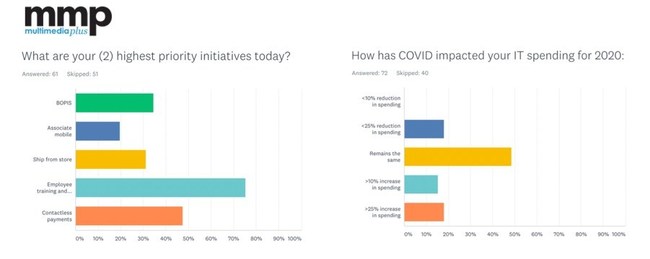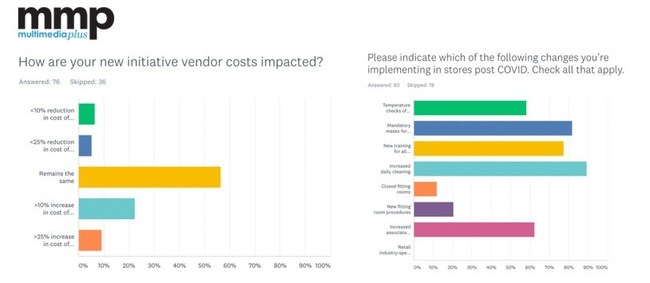
7.2.2020
Training and communications technology platform Multimedia Plus has released a COVID-19 impact survey that measures the impact of COVID-19 on pressing industry issues focused on technology as well as training and spending priorities.
The survey, launched on June 18, 2020, examined the planned financial impact and spending that the current COVID-19 pandemic has had on national business. In total, 112 senior executives in the retail and hospitality industries participated in the survey that closed on June 26, 2020.

KEY HIGHLIGHTS
The Unexpected Spend:
- 75% of respondents revealed employee training as their highest priority initiative
- 48% of respondents said their IT spending would remain the same; 15% said they were planning on spending 10% more; 18% said they planned to spend 25% more
- Employee training (75%) and contactless payment (47%) were the highest priority initiatives
The Expected Costs of COVID-19:
- Social Distancing (29%) and Staffing (28%) are pressing issues
- Mandatory Masks (81%) and Increased Daily Cleaning (89%) were the most noted changes implemented in stores post COVID-19
New Rules Require New Training & Communicating
“We expected that retailers and hospitality industry executives would be planning to spend more money on deeper and more frequent cleanings, and that budget would be allotted for protective equipment such as masks. Multimedia Plus had a strong feeling that technology budgets would be increased to impact proper training,” said David Harouche, CTO, CEO, and founder of Multimedia Plus. “The survey proves our instinct that the rulebook being used until now is completely obsolete. From an operational standpoint, executives are or need to be addressing mandates that are changing daily and vary by state or even county.”

The Impact: Communicating Effectively
As stores, bars and restaurants begin to reopen, response plans will entail tremendous operational changes which must be communicated to every employee to ensure these changes succeed. New safety protocols and procedures, including operations, sanitation, contactless payment, new HR rules and much more must be communicated consistently to all. In addition, as situations change state by state, even county by county, communications must be fast and targeted to be effective. In fact, the speed of these changes requires associates to be reached daily on their personal devices before they even set foot in a store. Communicating with them quickly and continuously is more important than ever before.

